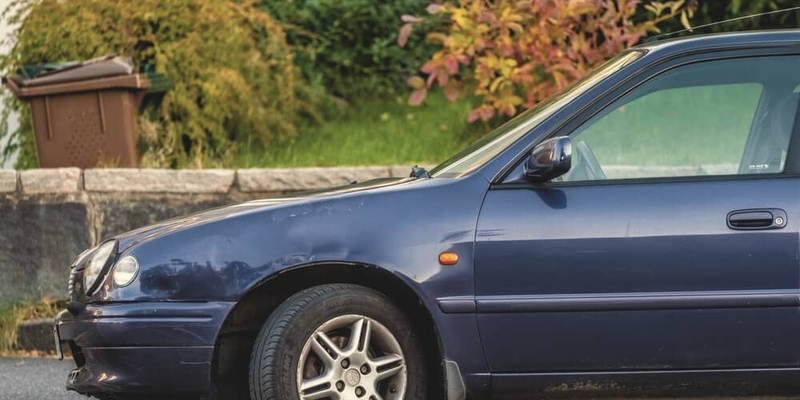
If you are not redirected within 30 seconds, please click here to continue.
Samedi: 10h – 16h HAE

If you are not redirected within 30 seconds, please click here to continue.
If you are not redirected within 30 seconds, please click here to continue.
Anyone who drives a vehicle in Canada needs auto insurance.
However, what is covered by your auto insurance is up to you. The minimum insurance coverage required by your province is known as one-way insurance. It protects you if you’re responsible for any physical injury sustained by another driver or damage to their vehicle — you’re covered “one-way” for liability to others. Minimum coverage requirements also protect you if you’re injured in an accident, but when it comes to vehicle damage, you’re only covered in select scenarios.
Going with standard coverage might lead to a cheaper insurance premium. However, it holds you financially accountable for any damage to your vehicle that you could have avoided.
So, how do you know when standard coverage is enough, or whether you need to add optional coverage to your policy?
It depends on how prepared you are to take on repair costs for your specific vehicle model.
One-way car insurance in Ontario
In Ontario, a one-way car insurance policy refers to four types of coverage that will deem you fully insured. These are:
- Third-party liability coverage
- Accident benefits coverage
- Direct compensation – property damage (DCPD) coverage, and
- Uninsured automobile coverage.
These cover you for any damages or injuries you cause another party. You’re also covered for any injuries you endure as a result of a collision. However, damage to your vehicle or its contents is only covered up to your policy limit if you are not at fault.
That means any other scenario where your car may need a repair — say, an object falls on your vehicle or you collide with another vehicle and are at fault — will require you to purchase comprehensive insurance or collision coverage.
Driving without these coverages can be risky — particularly if your vehicle has expensive parts and is pricey to repair. And with the upcoming change to the Insurance Act to allow Ontarians to opt out of DCPD coverage, opting for the bare minimum coverage could be even riskier. While doing so will provide a premium discount, the tradeoff of less coverage may not be worth it in many cases.
Related: Calculate your car insurance rate
One-way car insurance in Alberta
In Alberta, there are three mandatory auto insurance coverages you need to be fully insured: third-party liability, accident benefits, and Direct compensation – property damage (DCPD) coverage as of January 1, 2022.
Any additional coverage, like collision or comprehensive, is optional and will increase your premium.
Alberta drivers that don’t have coverage for uninsured or unidentified motorist collisions in their policy can sue for injuries through the Motor Vehicle Accident Claims Program (MVAC).
Should you get one-way car insurance?
Driving with minimal car insurance coverage only makes sense if your vehicle is an older model and if you’re a safe and careful driver. Otherwise, if you get in an accident, are found at fault, and are forced to cover the cost of repairing your vehicle, you’ll have to pay for that expense out of pocket.
Repairs to new vehicles with expensive parts or technological features are often far too costly to afford unexpectedly for the average car owner.
Even if you don’t get in a collision, you could be a victim of vehicle theft (particularly if you drive one of Canada’s most stolen vehicles). In this case, you’d have no help paying for a replacement vehicle.
Before even considering one-way car insurance, make sure your vehicle doesn’t have many kilometres left in it.
Lastly, you’ll also want to make sure you can get by without a car in your daily life, as you’ll have to pay out of pocket for a costly rental car — which you may have to drive for longer than expected due to ongoing auto part shortages.
Is one-way insurance worth the limited coverage?
Your insurance premium is heavily informed by how likely your specific model is to be in a collision and its claims loss experience. Insurance providers track this through a system called the Canadian Loss Experience Automobile Rating (CLEAR). So, if your vehicle model is older but has a reputation for being involved in a high number of collisions, you could save substantially with one-way insurance without taking on too much risk with repair costs.
You can also save significantly with one-way insurance if your vehicle has a high replacement value, since optional coverage would be priced with this in mind. But you’re taking on more risk than it may be worth by subjecting yourself to the repair costs.
In most cases, it’s best to be prepared for any scenario and supplement a basic auto policy with added coverage.
Comparing car insurance rates helps ensure you’re getting the lowest premium available for the coverage you require, so you can drive with peace of mind.
Don't waste time calling around for auto insurance
Use RATESDOTCA to shop around, and compare multiple quotes at the same time.
Get money-saving tips in your inbox.
Stay on top of personal finance tips from our money experts!










